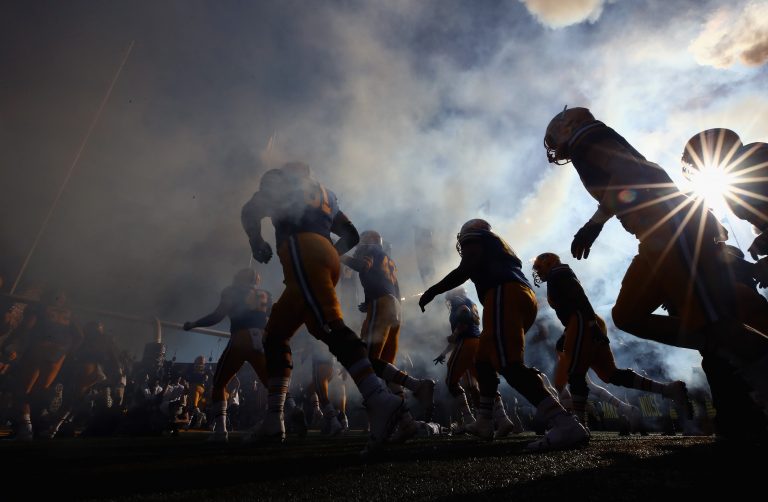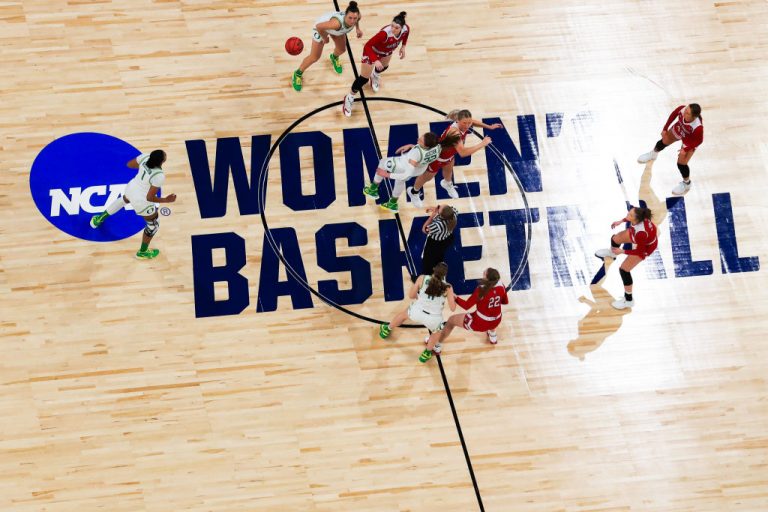TV is biggest driver in global sport league revenue
Why this matters
How leagues make their money says a lot about their growth, viability and future.
An enormous amount of money was poured into the professional sports market in 2018. One-hundred and six sports franchises worldwide are valued at more than $1 billion each and profit millions of dollars every year.
Here’s where that revenue came from:
National Football League
No league tops the NFL when it comes to bringing in revenue globally. The league generated $13 billion and has 29 of the top 50 most valuable sports franchises in the world.
The Dallas Cowboys, according to Forbes, are the most valuable sports franchise in the world with an estimated worth of $4.8 billion. That number is up 14 percent from 2017, tied for the largest jump amongst the top-50 most valuable teams.
Much of the revenue for the NFL is generated by its TV contracts.
According to Statista, the NFL will collect $54.6 billion from TV contracts with FOX (runs from 2014-2022), CBS (2014-2022), NBC (2014-2022), ESPN (2014-2021) and DirecTV (2015-2022).
The networks pay the NFL so much money for the TV rights because people, in an era of declining TV ratings, still watch football in the United States.
The Super Bowl is the most-watched TV program annually in America. According to Nielsen, the top-eight most watched programs in history were Super Bowls, led by Super Bowl XLIX between the Seattle Seahawks and New England Patriots on Feb. 1, 2015. The Super Bowl is 18 of the top 20 programs.
With so many people watching the Super Bowl, the networks command ever-increasing ad rates for 30- and 60-second commercials. For Super Bowl LII, NBC charged $5 million for a 30-second commercial spot and exceeded $1.4 billion in ad revenue. For Super Bowl LIII, CBS charged between $5.1 and $5.3 million for a 30-second spot.
The massive viewership and ad revenue allow the networks to pay for the NFL TV rights.
Fantasy football is another factor that contributes to the NFL’s position above other pro leagues in terms of revenue. Fantasy football creates interest in games that wouldn’t normally attract the casual fan, prompting them to tune in out-of-market games and prime time games every week. That is a big reason DirecTV pays the NFL $1.5 billion a year to stream NFL Sunday Ticket.
Major League Baseball
The second-highest grossing league in the world is Major League Baseball, which grossed a little more than $10 billion in 2017. The league became the second sports league to exceed that threshold.
Major League Baseball can’t match the NFL in its number of valuable franchises; only six place on Forbes’ list of 50 most valuable sports franchises. However, MLB’s most valuable franchise, the New York Yankees, ranks fifth on the list at $4 billion, greater than every NFL franchise except the Dallas Cowboys.
A big difference between the NFL and MLB is the use of regional sports networks. Baseball teams collect millions of dollars each year from regional TV networks. However, not all teams are big winners in their regional TV deals. One franchise sets the example of how to profit big off of the deals.
After signing a new television deal in 2014 with Spectrum Sportsnet LA worth $8.35 billion over 25 years, the Los Angeles Dodgers, who are the majority owner of the regional sports network, made $204 million in revenue off of TV money alone in 2016.
Only one other team, the Los Angeles Angels, collected more than $100 million ($118) in TV revenue in 2016. The after-effects of these types of contracts are massive.
The Angels signed their deal in 2012, tripling the TV revenue they received from their 10-year, $500 million contract that expired in 2011. Since more TV revenue tends to lead to a bigger payroll, the Angels shelled out a combined $331.5 million to top free agents Albert Pujols and C.J. Wilson. Five of the top 10 TV revenue teams also rank in the top 10 in payroll.
Attendance is a major revenue stream for Major League Baseball. Attendance dropped four percent in the 2018, creating the lowest overall league attendance since 2003. Seventeen of 30 teams had an attendance decrease, leading to $93.7 million in lost ticket revenue.
The average MLB ticket price has risen every season since 2006 and the average price was $32.44 in 2018. It is unclear how much the cost of attending a game is affecting the attendance numbers. The decrease in attendance also affects concessions sales. Based on the attendance decline, the league estimated almost $50 million in concession sales was lost.
National Basketball Association
The NBA is the third-highest grossing league in North America. The association brought in $7.4 billion in revenue during 2017, which represents a 25-percent increase from the previous season.
For the first time, every NBA franchise is worth at least $1 billion according to Forbes. The New York Knicks are the most valuable franchise ahead of the Los Angeles Lakers, Golden State Warriors and Chicago Bulls. The Knicks are worth an estimated $3.6 billion and generate $426 million in revenue.
The NBA’s national TV deals generate $2.66 billion annually for the league. The contracts run through the 2024-25 season. ESPN/ABC holds the rights to 100 regular-season prime-time games, 44 postseason games, the draft and draft lottery coverage. TNT airs 67 prime-time games during the regular season and holds the rights to All-Star Weekend, which includes the Rising Stars Challenge, Skills Competition, Three-Point Contest and Dunk Contest.
NBA teams also have local TV deals to add to the revenue stream. The Los Angeles Lakers get the most revenue from their local TV deal. The contract with Time Warner Cable is for 20 years and $4 billion, which means the team earns, on average, $200 million a season.
Unlike baseball, fans have been filling seats in NBA arenas like never before. The league set attendance records, including total attendance, average attendance and sellouts, for the fourth straight season. More than 22 million fans attended games in the 2017-18 season, and it was the first time attendance filled more than 95 percent of arena capacity.
Merchandise sales set new marks in the 2017-18 season, increasing 25 percent from the previous year. Finally, NBA League Pass subscriptions increased 63 percent.
National Hockey League
The NHL generated $4.43 billion during the 2017-18 season.
None of the 31 NHL franchises rank in the top 50 of the most valuable sports’ franchises in 2018 by Forbes. Only four NHL franchises were valued at more than $1 billion in 2017. The New York Rangers were valued at $1.5 billion in 2017, making the franchise the league’s most valuable. That is $450 million behind 2018’s 50th most valuable franchise in sports, the Cleveland Browns, which were valued at $1.95 billion.
With six franchises in Canada and 25 in the United States, the NHL splits its TV contract between both countries, doubling the amount of revenue possible. However, the league is working under the oldest contract of North America’s four major pro sports leagues.
In 2011, the NHL signed a 10-year, $2 billion deal with NBC (network) and Versus (cable) for the exclusive national broadcasting rights in the United States, showing 100 regular-season games plus playoffs.
In 2014, the league signed a broadcasting agreement with Rogers Communications for Canadian TV rights. The deal is worth $5.232 billion Canadian ($3,932,504,039.99 U.S.) over 12 years and runs through 2025-26 season. It is the most lucrative media rights real in the history of Canadian television.
These TV revenues are split between all 31 teams in the league.
English Premier League
The Premier League, the top pro football league in England, is another league benefitting from an influx of TV money.
It ranks as the third-highest grossing league globally, raking in $5.3 billion (U.S. dollars) in 2016. It generates almost double the revenue of the next closest top professional football league (Germany’s Bundesliga, $2.8 billion). European football leagues have massive international followings, which boosts the amount of money that can be made.
The Premier League’s TV contract, agreed to in 2016, runs through the 2019 season and is worth £10.4 billion ($13.6 billion), which is distributed among the 20 member clubs. In that deal, £5.3 billion is for domestic TV rights. The rest is from overseas rights.
Unlike Major League Baseball, the Premier League hasn’t struggled with attendance. Since 2009, the average attendances numbers for Premier League clubs rose from 34,215 in 2009 to 38,495 in 2018 and are the highest cumulative attendance in Europe.
Indian Premier League
In its 11th year, the Indian Premier League (cricket) is the fastest growing in the world. Its rapid revenue growth can be attributed to cricket’s popularity in India. The top-10 most-watched television broadcasts of all time in India are cricket matches.
Though the league consists of eight teams that play 60 matches during a 47-day period plus playoffs, the league is valued at $6.3 billion. That figure represents a 19-percent increase from 2017.
A significant part of the increase in value came from a global media rights deal with Star India worth $2.55 billion kicking in. It runs through 2022. Under terms of the deal, the league’s matches will be televised in six languages. Each match is valued at approximately $8.5 million.
The league’s previous deal, which went into effect in 2015, was for $45 million.
The media rights deal was a response to the IPL matches drawing 1.25 billion viewers during the 2017 season, a 22.5-percent increase. Those ratings contributed to the league’s broadcaster, Sony Max, being the most-watched channel in the country that year.
Attendance numbers are also among the top sports globally. The IPL drew more than 32,000 fans per match in 2015, more than Major League Baseball and La Liga (the top tier pro football league in Spain).
Tickets range anywhere from 400 rupees ($5.51) to 26,000 rupees ($358.05).
Australian Rules Football
Australian Rules Football draws some of the biggest crowds in the world, bringing in an average of 36,687 fans per game during the 2018 season. The clubs combined for $240 million in seating revenue, nearly a fourth of all total revenue.
The AFL collected $998.13 million ($720.25 million U.S. dollars) in 2017. Each team averaged about $55 million ($36.69 million U.S.) in revenue. The top teams, such as Collingwood Football Club and Hawthorne Football Club, brought in more than $70 million in revenue.
In 2015, the league signed a TV rights deal that runs from 2017 to 2022 worth $2.508 billion. The deal brings in $418 million a year, a 67 percent increase from the previous broadcasting rights deal. All matches except the AFL final are broadcast on Foxtel.
T.J. Mathewson is a junior journalism student at Arizona State University.








